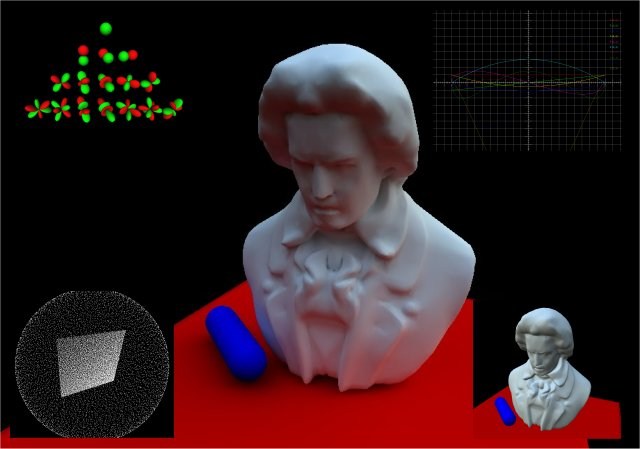 |

Submitted by , posted on 16 June 2003
|
 |

Image Description, by

This is an implementation of Spherical Harmonic Lighting to partially simulate Global Illumination for static models on a per-vertex level, in real-time. The executable itself contains a lot of SH-specific visualisations such as an Associated Legendre plot and 3D representations of the SH bases.
The simulation starts of by generating SH co-efficients for each vertex in 3 types of lighting model: diffuse unshadowed, diffuse shadowed, and diffuse inter-reflected; all lit by an HDR image light source. For each vertex, integration over the sphere is performed using a Monte-Carlo Estimator with 10,000 samples, and then projected onto 4 bands of Spherical Harmonics. For the first time the program starts this will take a while to generate, after which the SH coefficients will be cached to file for you to run again.
There is also an implementation of Ivanic/Ruedenberg's SH rotation algorithm, presented in verbose form that should be easily correlatable with their original paper. This manifests itself in the form of back-rotating the HDR light source SH vector into the model object-space.
Both the source code and executable are available on my webpage for
those interested in the technique: http://www.donw.co.uk .
|
|

